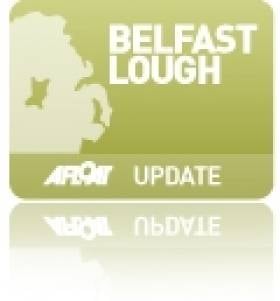Displaying items by tag: SMS Towage Ltd
Naming Ceremony Marks Second Tug for New Belfast Port Towage Operator
#NewTUGS - The tug Masterman was named at a ceremony in Belfast Port last week, the event marks the second tug for SMS Towage Ltd which launched a new towage service in early October, writes Jehan Ashmore.
The entry of SMS Towage to Belfast Port represents an investment in excess of £5m and is a response to the demand from port users.
The 50 bollard tonnes Masterman built in 2009 joins another omnidirectional tug Irishman completed in 1989 which has a bollard pull capacity of 40 tonnes. The pair are highly-manoeuvrable 24m tug boats capable of handling a full range of vessels.
They will be manned 24 hours a day and provide a 'just in time' service for the convenience of customers. The tugs first job was to assist the 43,000 gross tonnes bulk-carrier Billion Trader II.
SMS Towage's managing director Patrick Lyon said that the company had been set up to meet a clear demand for its services.
"We see Belfast as a strategic location. It is a vibrant port that will be home to a purpose built cruise terminal, a new offshore wind terminal and had a record year in 2012. We believe there is great potential for growth in the new business that will result in local employment."
The independent Northern Irish company will trade under the brand of SMS Towage, which operates on the River Humber and South Wales ports. Mr Lyon said that the company had grown quickly over the last 10 years to become the UK's largest independent harbour towage company.




























































